A Portable Layout in S-Scale
The N-Scale Zilwaukee Okeechobee and Tremungus
This page is the first of 2 pages of photos and description. Please click here to visit the next page
| Home |
Original Track Plan for the 13 x 16 N-Scale ZOT
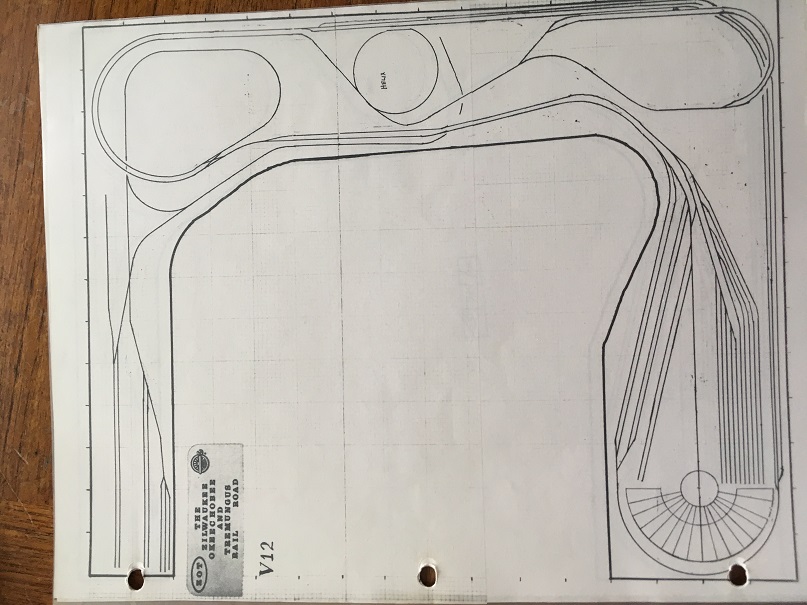
A flight of 4 N-scale (or nearly so) F-5 trainer jets painted for the USAF Thunderbirds are part of the Air Show in the 1990 version of the ZOT.
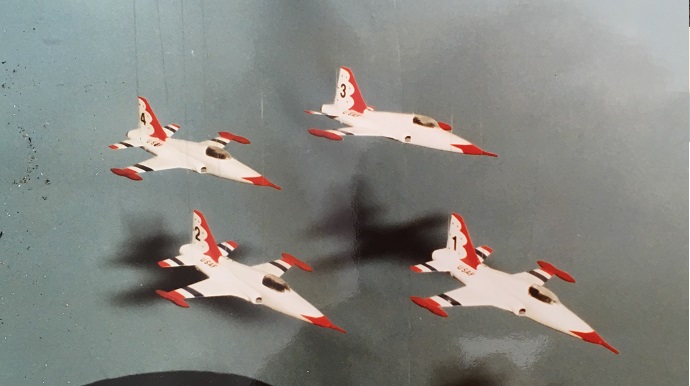
A group of us had a round-robin train club. We visited each other's layouts once a week and usually worked on some project or other. We named ourselves The Tuesday Night Turntable. You can probably guess when we met. One year, we decided to make a set of N-TRAK modules based on the scenes at Port Everglades, Fort Lauderdale, Florida. To that end we visited the port as an excursion and captured photos of possible subjects. One thing I found interesting was a Sea-Land container crane. The following three photos show the resulting scratch-built crane that spent some time on my ZOT. When we moved north to the West Palm Beach area, that crane spent about ten years on the HO layout of a good friend.
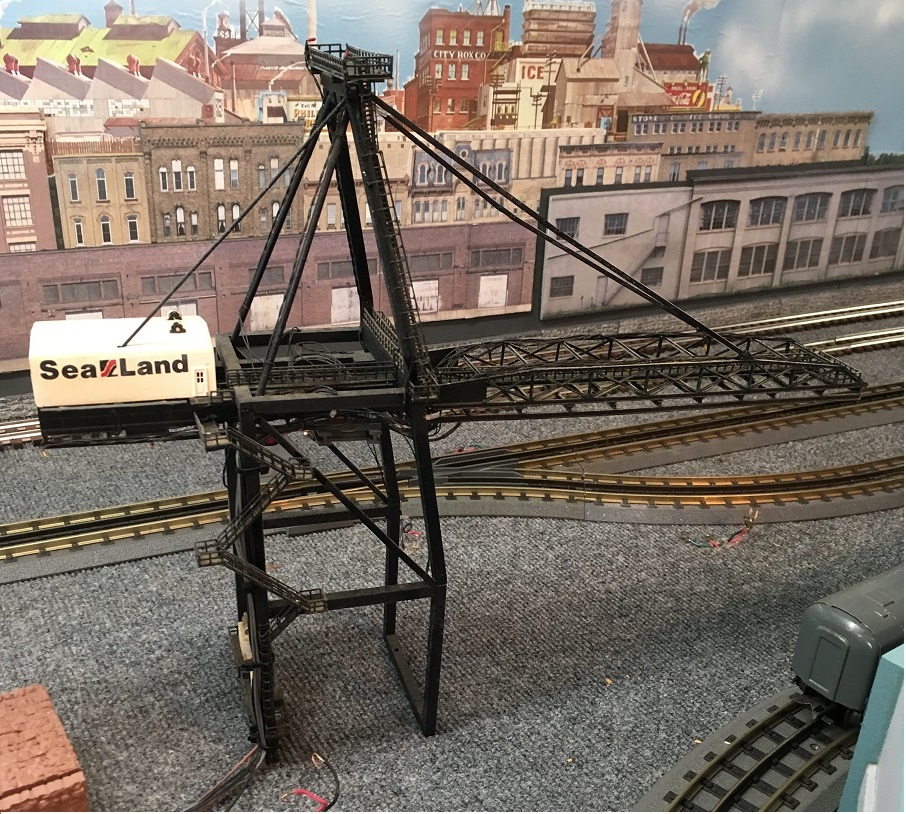
This view shows the articulated loading arm of the crane. It is mostly made from rail (HO and N) that was salvaged from used track and soldered together. It also has some screen material made from brass. The support arms are attached to the crane tower and to the arm by drilling and tapping 00-90 machine bolts. Very sturdy. The crane has been dropped a couple of times and the plastic parts sustained damage. None of the brass did.
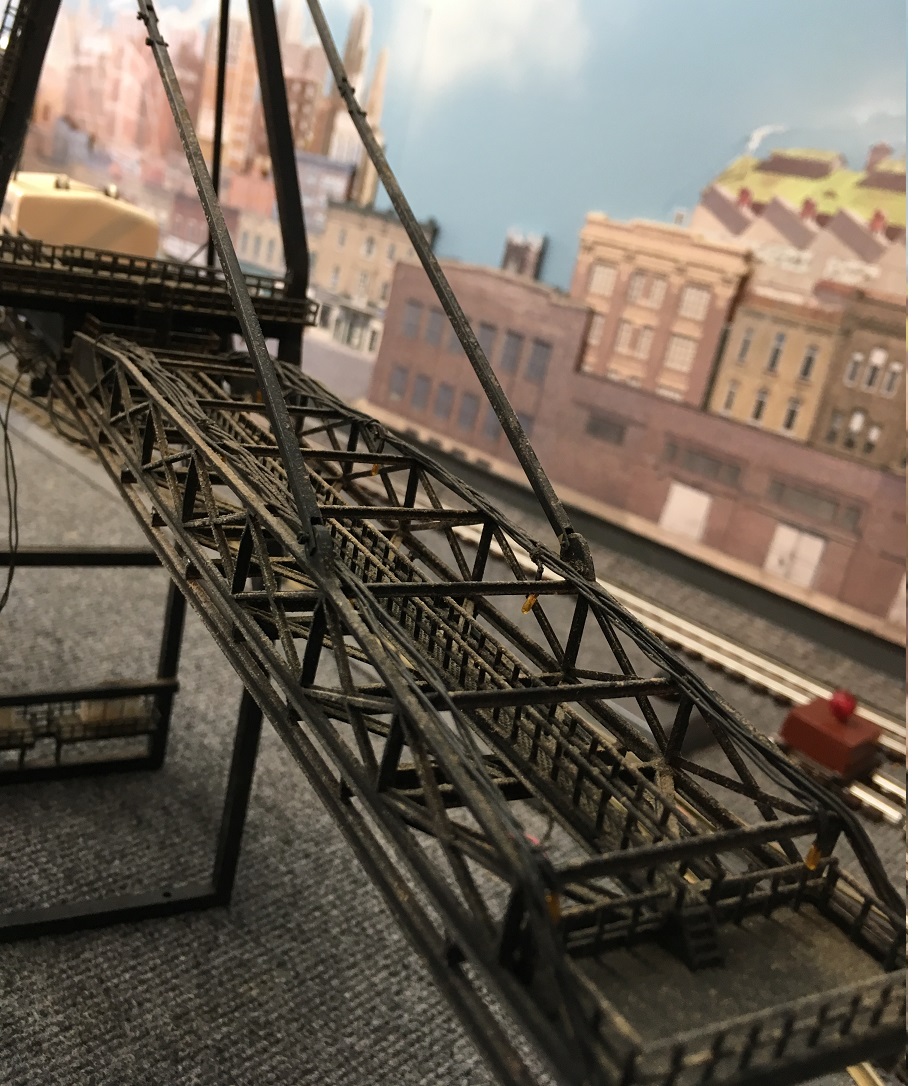
The upper, diagonal supports were fabricated from square, brass tubing. A couple of bolts and some machined brass form the hinges in the middle of those supports.
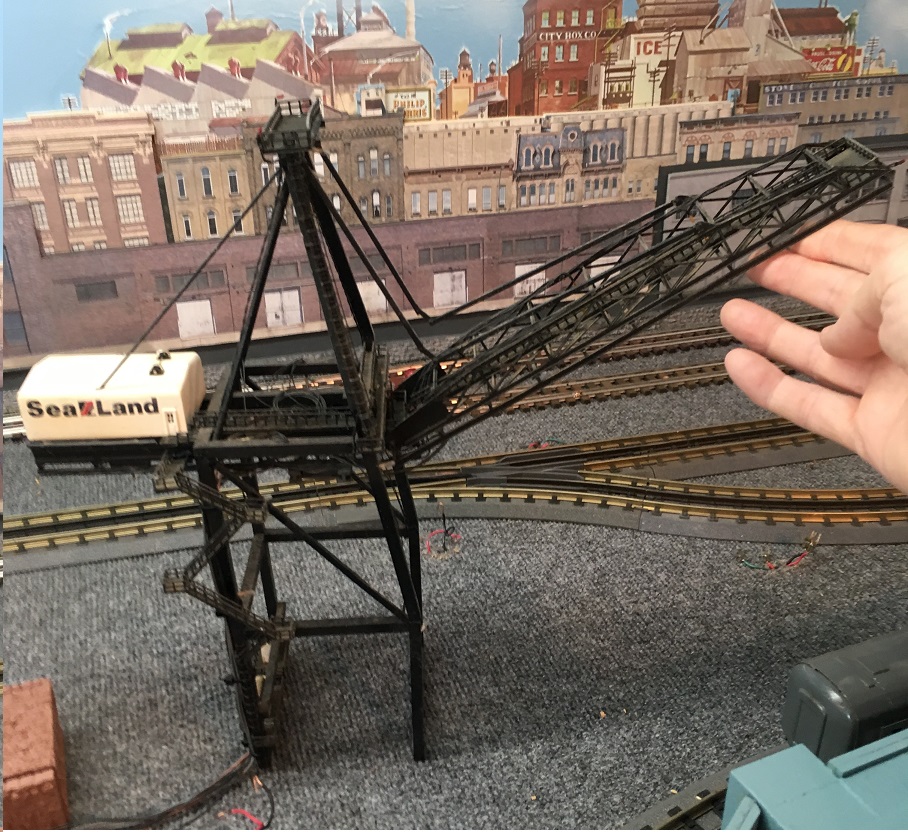
| Home |
Two bridges on the N-Scale Zilwaukee Okeechobee and Tremungus Rail Road The bridges are scratch-built from rail, sheet brass and wood shapes. The stream is varnish on top of epoxy on top of ground foam on top of a cement base. The epoxy was poured in layers with painted bubbles at each layer for depth. The surface was carved with a Dremel tool to provide ripples. The rock climbers are connected for safety with thread. The upper locomotive is a Con-Cor Y3B, articulated 2-8-8-2 with custom paint and decals. The lower locomotive is an old, Atlas Mikado 2-8-2 also with custom paint and decals. The cars are detailed and weathered.
Alas, the old ZOT is gone. It has been replaced with a new ZOT in S-Scale.

Here is another view of the same scene.

This is a photo from the N-Scale Zilwaukee, Okeechobee and Tremungus. In the foreground, a pair of F units are moving past the airport. Above, an ore train is leaving the mine at Zilwaukee full of copper ore. The huge mining machine is partly visible in the far background. It was made from a Revell kit. The N-Scale ZOT was dismantled in 1995. A new S-Scale ZOT was on display during the 2002 NMRA Convention.

The large passenger station had 6 double-ended tracks and 4 platforms. Passengers could get to the platforms by using the overhead passenger walkway. It was made from scratch and connected to a kit-bashed station made from a couple of kits.
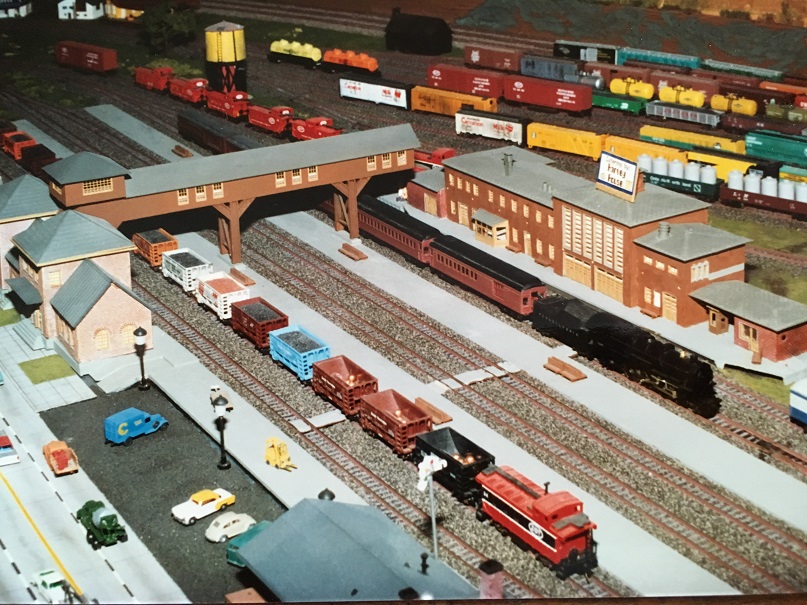
This is a photo from the engine service facility on the N-Scale Zilwaukee, Okeechobee and Tremungus Rail Road. A custom painted and decaled Atlas steamer is on the Diamond Scale turntable. In the background are more engines in the scratch-build roundhouse and a few cabeese. They and the Atlas RS-3 are also custom painted and decaled.

At the start, there was a turntable and plenty of roadbed. The small engine house was there only temporarily.
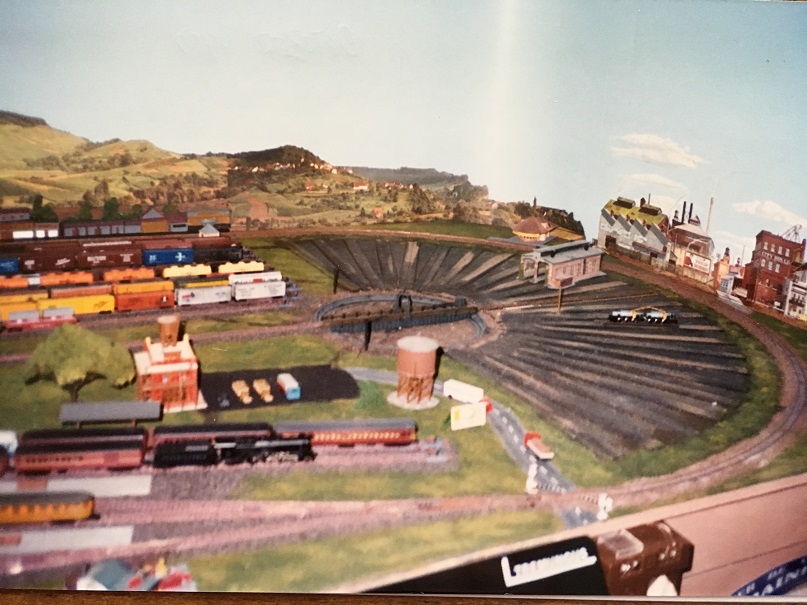
Two round houses came to provide some shelter for the stored engines and the crews who serviced them.

Another view showing the steam service and diesel service buildings.
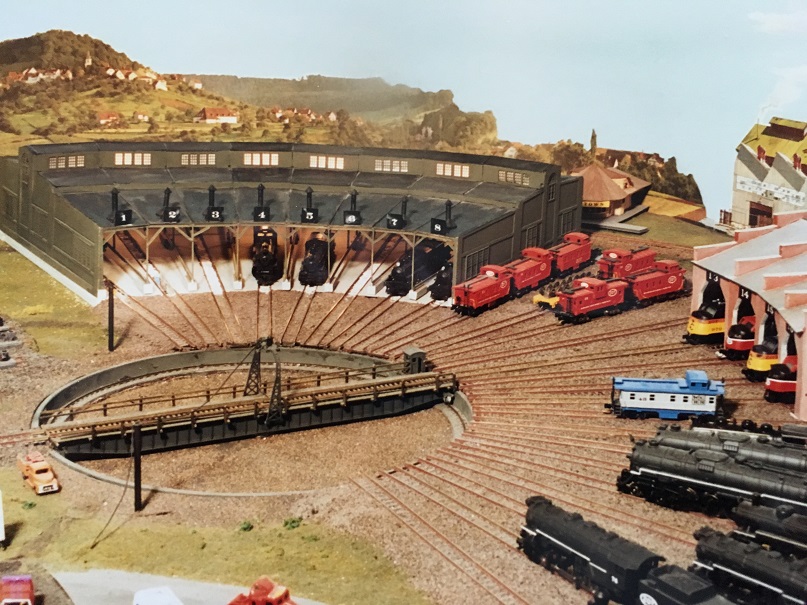
The diesel service facility was a brick structure that came along after the steam era roundhouse. You can also see some of the backdrop items and the small passenger station modeled after one in Michigan. It was made from scratch using veneer material from Constantines. If you are thinking about building from scratch, you should check their supply of veneer sheets.
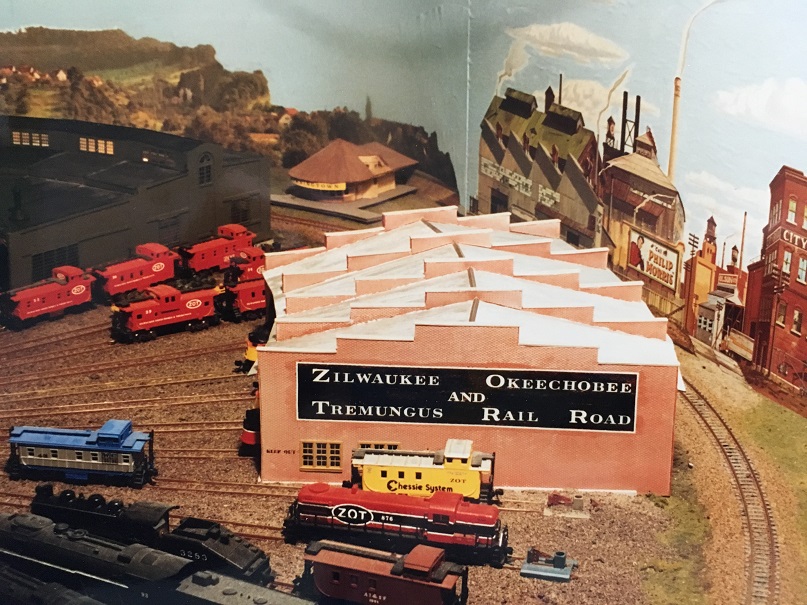
Here is another view of the same scene. In the background you can just see the stub ends of the freight yard at Tremungus. To the right is the scratch-built roundhouse. It was made using soldered rail (N and HO) as a framework. The covering is plastic sheet. The windows are commercial castings.

The logic of the power plan
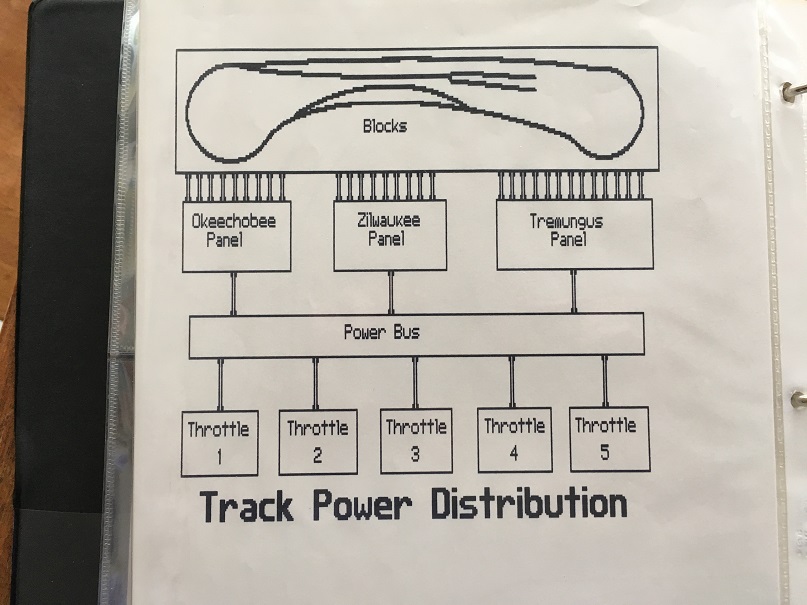
|
Some of the wiring The wires were located in PVC pipe. The pipes went all around the layout through holes in the benches. Since the benches were made from salvaged aluminum beams, there were a lot of sharp edges. The pipes protected the wires. Every few inches along the length of the pipe were access holes to pull wires for power drops, accessories and lighting. Power was distributed in 5 buses. That meant all track had access to all of the DC throttles. Each throttle was connected to all of the rotary switches on the panel. There was one switch for each electrical block. So, any throttle could be used to power any piece of track anywhere on the layout. |
|
|
|
|
| Here is the control panel for the area around the harbor. I called it Okeechobe Tower. The panel was made from Plexiglas, painted black and then striped with white tape. The knobs of the rotary switches were labelled to batch the block numbers on the diagram. For size comparison purposes, you can see the MRC power pack I indentified as "Throttle 2." It was mounted on an angled wooden shelf and held in place with a shaped, Plexiglas strap. | The insides of the panel show a couple of things. It is mounted with hinges along the bottom edge. There are limit straps to hold it at a convenient angle for access. You can see the ends of the PVC pipes as they emerge from the aluminum benches at the top. Near the hinge, you can find a Plexiglas wire guide for the connecting wires. That comes in handy when the panel is opened. There are a couple of terminal strips mounted to the bottom of the panel box. Each rotary switch has 2 connections in the center for the two rails of the block of track. The outer connections are for the throttle wires. |
|
|
|
Construction of the panel is the same as for the Okeechobee panel. You can see the supports for the helical track that was inside the mountain, the Zilwaukee gorge, the upper level strip mine area and the lower level airport area. Also visible is Throttle 1. It is a home made version of the Tat IV throttle. It was built using the schematics for the Heath Kit version and had some extra lights and meters. Still working to this day. |
|
Please click here to visit the next page
| Home |
| Site and Pages Copyright 2011-2025 - William P. Porter --- Some content belongs to the indicated provider. |